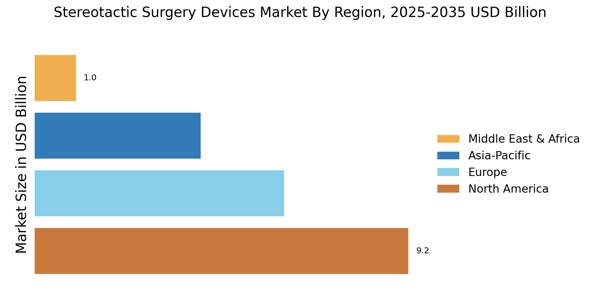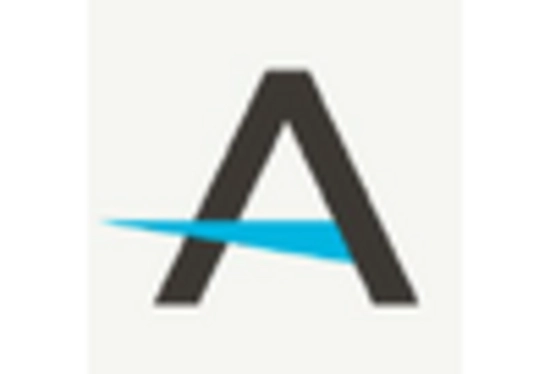Investment in Healthcare Infrastructure
Investment in healthcare infrastructure is a crucial factor influencing the Stereotactic Surgery Devices Market. Governments and private entities are increasingly allocating funds to enhance healthcare facilities, particularly in developing regions. This investment often includes the procurement of advanced surgical equipment, including stereotactic devices, to improve surgical outcomes and patient care. For instance, initiatives aimed at modernizing hospitals and clinics are likely to incorporate state-of-the-art stereotactic systems, thereby expanding access to these technologies. As healthcare systems evolve and expand, the demand for sophisticated surgical devices is expected to rise, fostering growth within the stereotactic surgery market.
Regulatory Support and Reimbursement Policies
Regulatory support and favorable reimbursement policies are instrumental in shaping the Stereotactic Surgery Devices Market. Governments and regulatory bodies are increasingly recognizing the importance of stereotactic surgery in treating complex conditions, leading to the establishment of supportive frameworks for device approval and usage. Additionally, reimbursement policies that cover stereotactic procedures encourage healthcare providers to adopt these technologies, as financial barriers are reduced. Recent changes in reimbursement guidelines have made it more feasible for hospitals to invest in advanced stereotactic devices, thereby promoting their utilization. As these supportive measures continue to evolve, they are likely to enhance the market landscape for stereotactic surgery devices.
Growing Incidence of Cancer and Neurological Disorders
The rising incidence of cancer and neurological disorders is a pivotal driver for the Stereotactic Surgery Devices Market. With an increasing number of patients diagnosed with conditions such as brain tumors, epilepsy, and Parkinson's disease, the demand for effective treatment options is escalating. Data suggests that the prevalence of brain tumors has been on the rise, with estimates indicating that nearly 700,000 individuals in the United States are living with a primary brain tumor. This growing patient population necessitates the use of advanced surgical techniques, including stereotactic surgery, which offers targeted treatment with minimal invasiveness. As healthcare providers seek to improve patient outcomes, the reliance on stereotactic devices is expected to increase, thereby propelling market growth.
Technological Innovations in Stereotactic Surgery Devices
The Stereotactic Surgery Devices Market is experiencing a surge in technological innovations that enhance precision and efficacy in surgical procedures. Advanced imaging techniques, such as MRI and CT scans, are increasingly integrated into stereotactic systems, allowing for real-time visualization during surgery. This integration not only improves the accuracy of tumor localization but also minimizes damage to surrounding healthy tissues. Furthermore, the development of robotic-assisted stereotactic systems is gaining traction, as these devices offer enhanced dexterity and control. According to recent data, the market for robotic surgical systems is projected to grow significantly, indicating a strong trend towards automation in surgical practices. As these technologies evolve, they are likely to drive the demand for stereotactic surgery devices, positioning the industry for substantial growth in the coming years.
Rising Awareness and Acceptance of Minimally Invasive Techniques
The Stereotactic Surgery Devices Market is benefiting from a growing awareness and acceptance of minimally invasive surgical techniques among both healthcare professionals and patients. As patients become more informed about the benefits of less invasive procedures, such as reduced recovery times and lower risk of complications, the demand for stereotactic surgery is likely to increase. Medical professionals are also recognizing the advantages of these techniques, leading to a shift in surgical practices. According to recent surveys, a significant percentage of surgeons report a preference for minimally invasive approaches when feasible. This trend is expected to drive the adoption of stereotactic devices, as they align with the evolving preferences of both patients and healthcare providers, ultimately contributing to market expansion.


















Leave a Comment